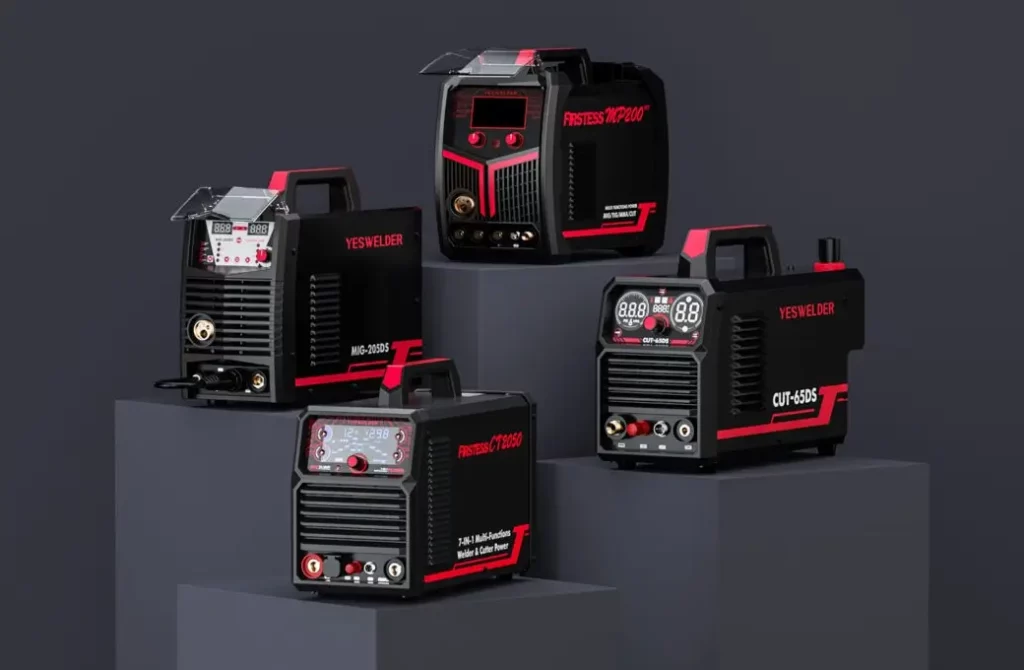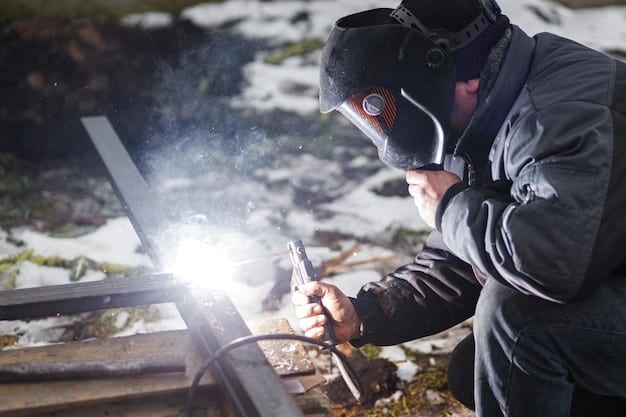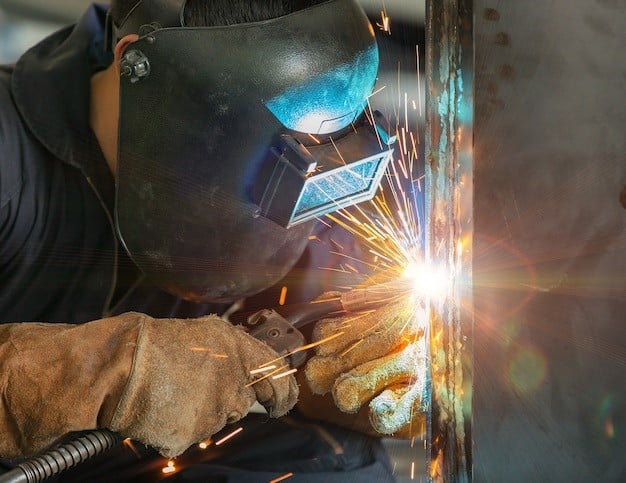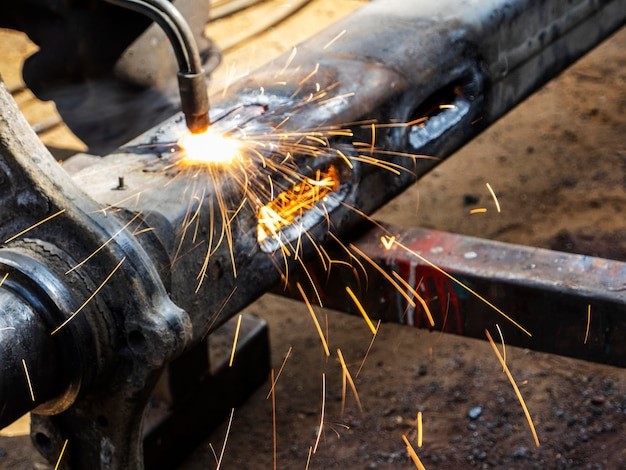Welding can be costly, especially for those on a tight budget. The high prices of materials, equipment, and energy consumption make it challenging for beginners or small businesses. However, opting for cheap welding and techniques is a viable solution. Stick welding, MIG welding, and flux-cored arc welding offer affordable alternatives without compromising functionality.
These approaches minimize the overall expenses while ensuring good weld quality for different applications. Balancing cost-efficiency with weld effectiveness is essential for reducing welding costs.
What Influences Welding Costs
Several factors significantly impact the overall cost of welding, including materials, welding machines, consumables, labor, and energy consumption.
Materials
The type of materials used in welding significantly affects the overall cost. High-quality metals like stainless steel or aluminum can be more expensive than mild steel. Thicker materials may also require higher energy input, increasing costs. Choosing affordable, compatible materials helps reduce welding expenses.

Welding Machines
Welding machines are a crucial factor in cost management. Different machines cater to different welding methods, with some being more expensive due to advanced features. Basic machines like those used in stick welding tend to be more affordable, while machines for processes like a TIG welder can be costlier.

Consumables
Consumables like TIG welding rods, MIG welding wires, and shielding gases add to welding costs. The type and quantity of consumables required depend on the welding method. Stick welding typically uses fewer consumables, making it cheaper than methods like MIG or TIG, which require more frequent replacements.
Labor
The complexity of the welding project influences labor costs. Highly skilled welders charge more, especially for intricate welding tasks. Simple welding jobs, such as those done through stick welding, require less skill and can be completed faster, reducing labor expenses.
Energy Consumption
Welding is an energy-intensive process, and the energy required depends on the welding method and machine. Stick welding uses less energy, making it more economical than processes like MIG or TIG, which need a continuous power supply.
Maintenance Costs
Regular maintenance of welding machines and tools is essential to avoid breakdowns and ensure longevity. Neglecting maintenance leads to higher costs in the long run, as damaged equipment often requires expensive repairs or replacement.
Environmental Factors
Welding outdoors or in windy conditions may require additional equipment or materials, such as specific shielding gases, increasing overall costs. Indoor welding tends to be less costly as it avoids these extra requirements.
Cheap Welding Methods
Several welding techniques are efficient and affordable. Three of the most cost-effective methods include Stick Welding, MIG Welding, and Flux-Cored Arc Welding. These methods offer reduced initial investment and provide practical benefits for different welding environments.
Stick Welding
Stick welding, also known as Shielded Metal Arc Welding (SMAW), is one of the most budget-friendly methods. The equipment is relatively inexpensive and doesn’t require external shielding gas, which significantly cuts costs. This method uses a consumable electrode coated in flux to create the weld. The flux creates a gas shield around the weld, protecting it from atmospheric contaminants.
Stick welding suits various metals, including steel and iron, making it a versatile option for hobbyists and small-scale businesses. However, this method may not produce the cleanest welds, requiring more post-weld cleaning due to slag formation.

MIG Welding
Metal Inert Gas (MIG) welding is another economical choice, particularly for those looking for a welding method that is easy to learn and efficient for continuous welds. MIG welding is cost-effective because it uses CO2 as shielding gas, which is cheaper than other gases like argon. MIG welding is well-suited for welding metals such as steel and aluminum. It provides cleaner welds compared to Stick welding and requires less cleaning afterward.
Additionally, MIG welding allows for faster weld speeds, making it more productive for large projects. The equipment cost is moderate, but the affordability of CO2 makes it an excellent choice for long-term projects.

Flux-Cored Arc Welding
Flux-Cored Arc Welding (FCAW) is another budget-friendly welding technique for outdoor projects. This method is similar to MIG welding but differs in using a tubular wire filled with flux instead of requiring an external shielding gas. This reduces the need for costly gases, making FCAW more cost-efficient for certain applications.
It’s highly effective in outdoor environments where wind could disrupt gas shielding in other methods. Like Stick welding, FCAW produces slag, which requires post-weld cleanup but offers higher productivity rates. Due to its efficiency and cost-effectiveness, it is commonly used for heavy-duty welding tasks, such as construction and shipbuilding.
Comparison of Cheap Welding Methods
| Welding Method | Benefits | Why It’s Cheap | Maintenance Requirements | Ease of Use |
| Stick Welding | Versatile, suitable for various metals, doesn’t require external shielding gas. | Uses inexpensive equipment and no external gas required. | Moderate maintenance needed due to slag cleanup and electrode replacement. | Requires skill and experience; not the easiest for beginners. |
| MIG Welding | Cleaner welds, faster weld speed, suitable for metals like steel and aluminum. | Uses CO2, a cheaper shielding gas, and offers moderate equipment cost. | Low maintenance with occasional wire replacement and gas refills. | Beginner-friendly; easy to learn and operate. |
| Flux-Cored Arc Welding | Ideal for outdoor work, efficient in windy environments, good for heavy-duty welding. | No external gas needed; uses flux-cored wire which is more affordable for certain applications. | Moderate maintenance due to slag cleanup but less frequent gas handling. | Relatively easy to use, especially in outdoor environments. |
Pros and Cons of Cheap Welding Methods
Cheap welding methods come with both advantages and disadvantages. Below is a breakdown of these techniques’ most important pros and cons.
Pros
Low Initial Investment
- Cheaper welding methods like Stick Welding and Flux-Cored Arc Welding require less expensive equipment.
- Minimal startup costs make these methods accessible for small businesses and hobbyists.
- No need for complex machinery or costly materials.
Beginner Friendly
- Methods like MIG Welding are easy to learn and operate, making them suitable for newcomers.
- The straightforward process allows beginners to practice without too much technical complexity.
- Low chance of errors due to simple setups.
Minimal Consumables
- Stick Welding and Flux-Cored Arc Welding require fewer consumables, keeping operational costs low.
- No need for expensive shielding gases in some methods, further reducing ongoing expenses.
- Consumables like electrodes are widely available and affordable.
Versatility
- Stick Welding is versatile, working on metals such as steel, iron, and aluminum.
- Flux-Cored Arc Welding can be used for indoor and outdoor projects, making it highly adaptable.
- Suitable for different environments, including construction sites and workshops.
Durability
- Cheap welding methods can produce durable welds that stand the test of time when used correctly.
- Especially useful for basic, heavy-duty work like construction and repair tasks.
- These methods provide reliable results for non-critical applications.
Lower Energy Consumption
- Stick Welding uses less energy than advanced welding methods, making it more energy-efficient.
- MIG Welding allows for faster welds, reducing electricity consumption over long-term projects.
- Efficient energy usage leads to lower utility costs.
Cons
Weld Quality
- Welds produced by cheaper methods may not be as clean or aesthetically appealing.
- Stick welding often requires more post-weld cleaning due to slag formation.
- Lower precision, making it less suitable for high-detail work.
Suitability for Specific Materials
- Not all cheap welding methods work well on all materials.
- Stick Welding is less suitable for thin metals or materials requiring high precision.
- Limitations in welding aluminum or exotic alloys.
Limited Work Environment
- Some methods are less effective in controlled environments, like indoors, where precision is key.
- Outdoor environments, especially windy areas, may have difficulties with gas shielding through methods like MIG welding.
- Stick Welding produces slag, which may not be ideal in clean, controlled environments.
Frequent Maintenance
- Some of the cheap welding methods require frequent cleaning and maintenance.
- Electrode replacement and machine upkeep are necessary to ensure efficiency.
- Higher maintenance costs can offset the initial savings over time.
| Pros | Cons | |
| Requires less expensive equipment and minimal startup costs. | Not as clean or precise, requires post-weld cleaning. | |
| Easy to learn and operate, making it suitable for newcomers. | Limited to certain metals, struggles with thin materials. | |
| Requires fewer consumables, reducing operational costs. | Less effective in controlled or precise environments. | |
| Suitable for a range of metals and environments. | Requires more cleaning and equipment upkeep, which can add costs. | |
| Can produce durable welds for basic, heavy-duty tasks. | ||
| Uses less energy, reducing long-term costs. | ||
How to Balance Cheap Welding and Weld Quality
Choosing the Right Welding Method
To balance cost and quality, selecting the right welding method based on your project’s needs is essential. A stick welder may be ideal for heavy-duty work, while a MIG welder is better for projects requiring cleaner welds. Each method has strengths that can help you achieve high-quality results cheaply.
Investing in Energy-Efficient Equipment
Using energy-efficient welding machines can reduce long-term expenses. Although the initial investment may be higher, energy-efficient models lower electricity costs over time. This also ensures consistent performance, which contributes to maintaining weld quality.
Using Inexpensive Consumables
Opting for cost-effective consumables like electrodes or shielding gas helps minimize ongoing expenses without sacrificing weld quality. MIG Welding, for example, uses affordable CO2 gas, which can produce clean welds at a lower cost.
Regular Maintenance
Maintaining welding equipment is key to achieving both cost efficiency and high weld quality. Regular cleaning, checking for wear and tear, and replacing consumables, when necessary, can extend the machine’s life and ensure consistent weld performance. Proper maintenance helps avoid unexpected breakdowns, which could otherwise increase costs.

Final Thoughts
Choosing the right welding method and welding equipment supplier can significantly reduce costs while maintaining quality. Stick, MIG, and Flux-Cored Arc Welding are all affordable options that cater to different project needs. By carefully selecting materials, investing in efficient equipment from best welder brands, and performing regular maintenance, it’s possible to balance cost with quality. Each method has strengths, and understanding when and how to use them is key to achieving efficient and cost-effective welds. Cheap welding methods offer a practical solution for those looking to complete projects within budget while still producing reliable results.
FAQs
What is the cheapest type of welding?
Stick Welding is generally the cheapest due to its inexpensive equipment and lack of need for external shielding gas.
Is MIG welding cheaper than TIG welding?
MIG Welding is typically cheaper because it uses affordable shielding gas like CO2 and has lower equipment costs.
Can cheap welding methods still produce quality welds?
Yes, cheap welding methods can produce reliable welds with the right technique and regular maintenance, though precision may vary.
What consumables are used in cheap welding?
Common consumables include electrodes, filler wire, and shielding gas, with inexpensive options like CO2 and basic electrodes available.



